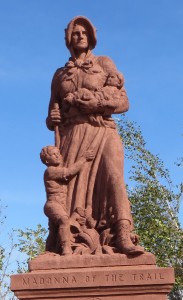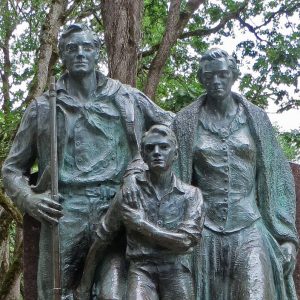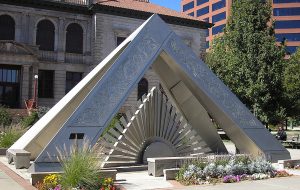
Since 1890, Americans have erected more than 200 sculptural monuments to the “pioneers” who settled western lands. A few of these monuments honored famous individuals, but most depicted generic men or women.
Many of the earliest pioneer monuments depicted American Indian “savagery” yielding to white settlement. Proposed statues that did not celebrate white cultural dominance clearly enough faced strong public opposition. By the late 1920s, the designs of pioneer monuments coalesced around remarkably similar depictions of sunbonneted women carrying white “civilization” westward, armed only with a rifle or a Bible.

Despite the growing popularity of cowboys and Indians in film and television, public interest in these “pioneer mothers” declined after World War II. Pioneer monuments increasingly celebrated nuclear family units.
Most westerners ignored the pioneer monuments in their midst. Yet even as interest in older monuments in waned in many western cities, pioneer commemoration efforts increased in rural areas. The Culture Wars and the rise of heritage tourism collided to inspire a new wave of more varied pioneer monuments beginning in the 1980s.
Native activism fueled protests against some pioneer monuments in the 1990s. Nationwide debates about Confederate monuments inspired efforts to remove or reinterpret several pioneer monuments beginning in 2015.

Within this website, you can:
- Explore an interactive map and timeline. Scroll along the timeline and watch as monuments appear across the country.
- Read highlights of this study, including comparisons of similar statues and diverse monuments within one area.
- Browse the 200 monuments included in this study by date, location, artist and title of the work. Read about and view photos of each statue.
- Find the pioneer monument nearest you.
- Search for individual monuments in the database.
- Read tales and musings on this decade-long research project.
Follow Us
![]() https://www.facebook.com/PioneerMonument/
https://www.facebook.com/PioneerMonument/
This website is a WORK IN PROGRESS. We invite you to visit again, as more content will be coming soon.